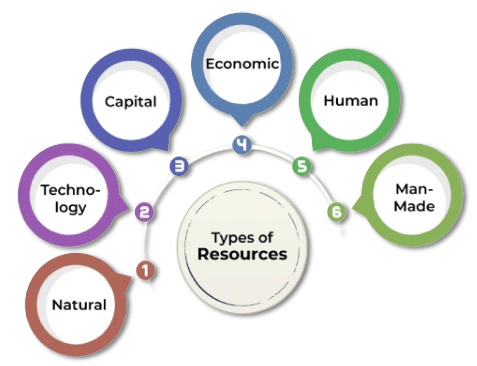
- Introduction to Resource Allocation
- Types of Resources
- Techniques for Effective Allocation
- Tools for Resource Management
- Balancing Resource Workloads
- Preventing Overallocation
- Measuring Resource Utilization
- Conclusion
Introduction to Resource Allocation
Resource allocation involves the strategic distribution and management of an organization’s resources including personnel, finances, time, equipment, and technology to achieve defined goals. It is a critical component of both business operations and project management, ensuring that all available resources are used efficiently and effectively. By properly allocating resources, organizations can increase productivity, reduce waste, control costs, and meet deadlines more consistently. This strategic process also helps in minimizing bottlenecks and project delays, which often lead to increased expenses and missed opportunities, especially when coupled with Data Science Training to enhance decision-making and process optimization. Moreover, effective resource allocation contributes to a higher return on investment by aligning resources with the most valuable and time-sensitive initiatives. It prevents the overloading of staff, avoids duplication of efforts, and ensures that the right skills are applied where they are most needed. Poor allocation, on the other hand, can result in missed deadlines, financial losses, employee burnout, and reduced organizational performance. Therefore, thoughtful resource planning and management play a key role in enhancing profitability, maintaining competitive advantage, and achieving long-term business success.
Interested in Obtaining Your Data Science Certificate? View The Data Science Course Training Offered By ACTE Right Now!
Types of Resources
Resource planning involves managing and coordinating various resource types, each essential for the successful execution of a project. Human resources include employees, contractors, and freelancers who contribute their skills and expertise to tasks. Financial resources encompass the budgets, funding, and capital necessary to support project activities. Time resources refer to the specific time allocated for tasks or milestones to ensure timely delivery and project completion within the Strategy Implementation Process. Material and equipment resources consist of tangible assets such as tools, machinery, and raw materials used in operations or production. Technology resources involve hardware, software, and digital systems that support and automate business processes. Additionally, knowledge resources represent intellectual assets, including data, documentation, research, and proprietary information vital for decision-making and innovation.

Proper planning and coordination of these varied resources enable organizations to optimize workflows, reduce inefficiencies, and align execution with strategic goals. By effectively managing all resource types, businesses can enhance productivity, reduce delays, and ensure that each project component contributes meaningfully toward overall success. Resource planning, therefore, is key to operational efficiency and project achievement.
Techniques for Effective Allocation
- Set Clear Priorities: Define goals and rank tasks or resources by importance. This helps focus efforts where they yield the most value.
- Use Data-Driven Decision Making: Analyze relevant data to inform allocation. Historical performance, forecasts, and KPIs support smarter, objective choices.
- Balance Short-Term and Long-Term Needs: Allocate resources not only to urgent tasks but also to initiatives that support strategic growth and sustainability, especially those informed by Analytics Course Certifications.
- Apply the 80/20 Rule (Pareto Principle): Identify and prioritize the 20% of inputs that generate 80% of results. Focus resources accordingly to maximize impact.
- Stay Flexible and Adaptive: Circumstances change. Regularly reassess and reallocate resources as needed to respond to new priorities or unexpected challenges.
- Use Technology and Tools: Leverage software for budgeting, scheduling, and resource management to track usage and optimize distribution.
- Communicate Clearly: Ensure all stakeholders understand the rationale behind allocation decisions to foster alignment, reduce resistance, and promote accountability.
- Project Management Software: Tools like Asana, Trello, or Microsoft Project help plan, assign, and track tasks, ensuring resources are used efficiently across teams.
- Time Tracking Software: Tools such as Toggl or Harvest monitor how time is spent, providing insights to optimize future allocations and improve productivity.
- Budgeting and Financial Tools: Platforms like QuickBooks or SAP track financial resources, helping organizations stay within budget and forecast needs, especially with Data Science Training for better analysis.
- Collaboration Tools: Slack, Microsoft Teams, and Zoom enhance communication and coordination, ensuring that resource use aligns with project goals.
- Resource Scheduling Tools: Applications like Float or Resource Guru allow managers to schedule and allocate human and physical resources with visibility into availability and workload.
- Inventory Management Systems: Tools like NetSuite or Zoho Inventory help manage physical assets and supplies, preventing overstocking or shortages.
- Analytics and Reporting Platforms: Software such as Power BI or Tableau turns data into actionable insights, helping leaders make informed resource decisions.
- Monitor Workloads Regularly: Use tools to track individual workloads and ensure no team member consistently carries more than their capacity.
- Set Realistic Expectations: Define achievable deadlines and deliverables based on available resources and team bandwidth to avoid setting the team up for overload.
- Prioritize Tasks: Focus on high-impact tasks first. Ranking assignments by urgency and importance, guided by Theories of Motivation, helps allocate time and energy efficiently.
- Use Resource Management Tools: Tools like MS Project, Float, or ClickUp provide visibility into workloads and help redistribute tasks before overallocation occurs.
- Include Buffer Time: Build in extra time for unexpected issues or delays to prevent cascading overloads when things don’t go as planned.
- Encourage Open Communication: Foster a culture where team members feel comfortable discussing workload concerns early, allowing for timely adjustments.
- Review and Adjust Plans Frequently: Regularly reassess schedules and task assignments to adapt to changes in availability, scope, or priorities.
To Earn Your Data Science Certification, Gain Insights From Leading Data Science Experts And Advance Your Career With ACTE’s Data Science Course Training Today!
Tools for Resource Management

Balancing Resource Workloads
Resource workload balancing is crucial for maintaining team productivity and preventing burnout. It involves distributing tasks fairly among team members based on their individual capacity, skill level, and current availability. An effective balance ensures that no one is overwhelmed while others remain underutilized. Managers often use workload visualization tools, such as Gantt charts or dashboards, to monitor assignments and identify imbalances. These tools help in quickly redistributing tasks when necessary, enhancing Time Management and Productivity. Flexible task delegation plays a key role in this process by allowing adjustments as priorities or team dynamics shift. Regular check-ins with team members further support balance, as they offer insights into workload pressures, stress levels, and performance concerns. These conversations promote transparency and proactive adjustments. Additionally, including buffer time in schedules helps accommodate unforeseen delays or urgent tasks without overloading the team. This built-in flexibility supports better time management and reduces last-minute stress. When workloads are equitable, teams are more engaged, morale improves, and efficiency rises. Ultimately, balanced resource management leads to more sustainable productivity and a healthier work environment.
Gain Your Master’s Certification in Data Science by Enrolling in Our Data Science Masters Course.
Preventing Overallocation
Measuring Resource Utilization
Measuring the utilization of resources is essential for evaluating efficiency and supporting data-driven decision-making. A key metric is the utilization rate, which shows the proportion of time a resource is engaged in productive work versus their total available time. Another important metric is capacity utilization, which assesses whether resources are underused or overextended by measuring the percentage of total available capacity being used. Resource efficiency evaluates how much output is generated relative to the input, helping organizations understand productivity levels and identify areas for improvement, especially through Logistic Regression Using R for data-driven insights. Planned vs. actual usage compares forecasted resource use against real performance, revealing variances that may require corrective action. Additionally, tracking billable vs. non-billable hours helps distinguish between revenue-generating activities and internal or administrative work. Regularly monitoring these metrics allows organizations to make informed decisions, optimize resource allocation, and improve overall operational effectiveness. This continuous measurement ensures a better balance between capacity, demand, and performance.
Preparing for Data Science Job? Have a Look at Our Blog on Data Science Interview Questions & Answer To Ace Your Interview!
Conclusion
Good resource planning is vital for optimizing productivity, achieving project goals, and maintaining financial sustainability. Effective planning ensures that the right resources are available at the right time, helping teams meet deadlines and stay within budget. It allows organizations to align resource availability with project demands, reducing downtime, avoiding overloading, and enhancing efficiency. By implementing strategic planning methods, such as forecasting and capacity planning, along with Data Science Training, organizations can anticipate future needs and allocate resources accordingly. The use of resource management software further streamlines the process by offering visibility into availability, workload, and performance. These tools support better coordination, informed decision making, and faster adjustments when priorities change. Incorporating industry best practices like clear communication, regular monitoring, and continuous improvement minimizes operational complexity. This leads to smoother execution, higher team morale, and more consistent project outcomes. Overall, strong resource planning supports not only project success but also long-term organizational resilience and cost-effectiveness.


